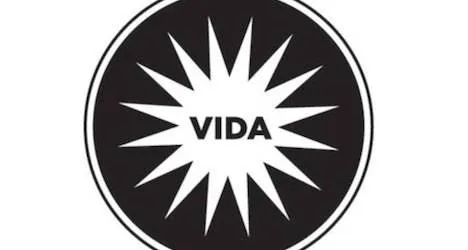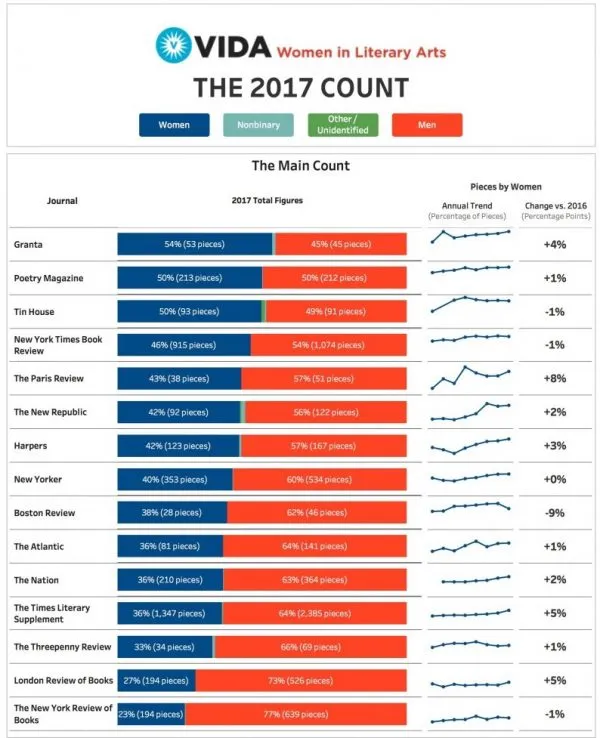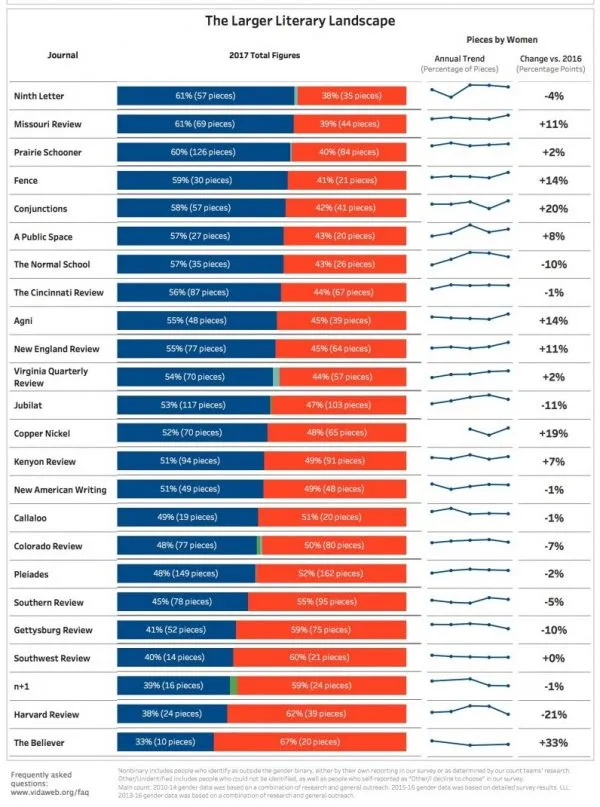
The 2017 VIDA Count Is In
The 2017 VIDA Count hit the presses yesterday, and there are some causes for celebration, even while there is evidence that more work must be done. The VIDA Count measures the presence of women and non-binary individuals in publications across the literary landscape: their main count covers 15 large-scale publications, and their count of the larger literary landscape covers 24 independent/small press literary journals and magazines. For purposes of consistency, the VIDA Count only considers work by women and non-binary individuals that was granted space in print; as VIDA points out, “It is too easy to confine women, gender minorities, and other marginalized writers to cost-effective web platforms, which frequently pay differently (or don’t pay at all), compared to their print counterparts.”
There are a few good points to highlight this year, but before we start, I want to highlight one of the figures VIDA gives us, which is that there was a 15% increase in the number of writers who completed the VIDA survey, up from 2016. Without writers completing these surveys and making the data available, the VIDA count wouldn’t really work, and it would be all too easy for publications to continue falling back on the old excuse that women and non-binary individuals don’t submit as much work as men.
I’ll be providing links to the websites for the magazines/journals that performed well in the Count so that you can buy some of their cool swag, subscribe to their content, or consider sending your own work there. Let’s show them some love and reward their work at parity. And away we go!



the good news: main count
Two magazines publications displayed gender parity above 50%: Granta published 53.5% women, and Poetry published an even 50% women writers. In the runner up category (40-49.9% women writers), we saw a decent showing from Harper’s (42.1%), New York Times Book Review (45.9%), New Republic (42.2%), The Paris Review (42.7%), and Tin House, which showed a slight drop from last year but came in at 49.7%. That said, 8 out of the 15 publications covered in the main count showed fewer than 40% women writers on their pages.boo! hiss!
The New York Review of Books did well in 2016, coming in at 46.9% women writers. But in 2017? Not so much. Down to 23.3% women writers featured in 2017. They’ve done well before, they can do it again, but this shows that the goal of gender parity requires consistent effort, not a one-time party.gender non-binary
10 out of the 15 publications in the main count included at lease one piece by a non-binary individual. We offer props to The New York Times Book Review (which published three pieces), The New Yorker (also three pieces), New Republic (three pieces), and The Times Literary Supplement (with four pieces published by non-binary writers).









